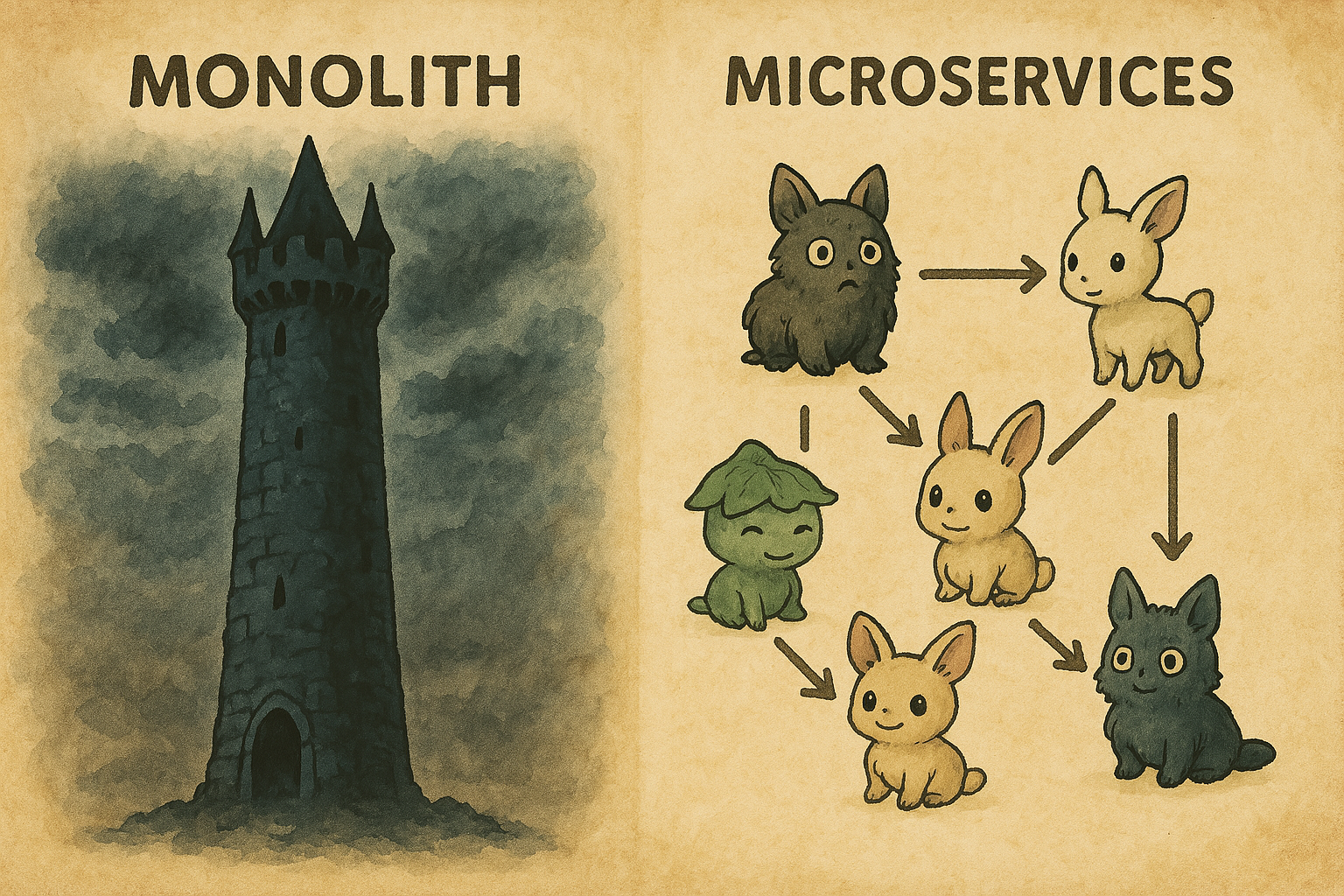
How Code Reviews Should Work
The best code reviews feel like collaboration, not judgment. They’re an opportunity to ask questions, learn, and improve as a team. When the small stuff is already taken care of, there’s space for that conversation to happen. Caparra is building tools to make this easier for your team.

Microservices and DevOps: A Perfect Match
If you're a developer exploring ways to improve your codebase and simplify your life, you've likely heard the term "microservices." It's one of those buzzwords you might nod along with but never get around to exploring in depth. Let’s take a closer look at what microservice architecture really means, why it's valuable, and how to get started without getting overwhelmed.

Clean Commits from the Start with pre-commit
Have you ever run git commit, only to realize later that you forgot to fix a small error? If so, you know that tiny missteps can quickly add up to big hassles for your entire team. That is why a simple tool called pre-commit can be so helpful. It automatically runs checks, linters, and other automated routines right before you commit your code.

Deployment Frequency: The Key to High-Performing DevOps
To measure DevOps success, Deployment Frequency is a critical yardstick. It is one of the four DORA (DevOps Research and Assessment) Metrics that measure software delivery performance. The more frequently an organization can successfully deploy code to production, the more agile and responsive it can be to changing market demands, customer needs, and security challenges.

The Change Failure Rate Playbook
In the world of DevOps, metrics are signposts that guide engineering teams toward better practices and improved software delivery. One of the critical metrics defined by the DevOps Research and Assessment (DORA) group is the Change Failure Rate (CFR). This metric measures the percentage of deployments that result in a failure in production, providing a clear indicator of the stability and reliability of software releases.

No One Should Be Deploying Code at 2 AM
Deploying code at 2 AM is a cry for help. It signals a process problem, not a people problem. If your team is routinely making production changes in the dead of night to minimize impact on users, then you’re not reducing risk; you’re just shifting it onto tired, overworked developers who are more likely to make mistakes.

Continuous Deployment in Action
Continuous deployment is the practice of automatically releasing every validated code change into production. In this workflow, as soon as a developer pushes code to the repository, it goes through automated testing and, if it passes, it is deployed immediately. This ensures a steady stream of improvements and bug fixes, making software development more dynamic and responsive.

The Hidden Cost of Toil in DevOps
DevOps is all about efficiency, reliability, and automation. But within every DevOps team's workflow, there’s a hidden tax that drags down productivity and morale: toil. If left unchecked, toil can lead to burnout, slower innovation, and unnecessary operational costs. Reducing toil is a key focus for Caparra, and a big motivator for our work in building AI-powered tools focused on DevOps.